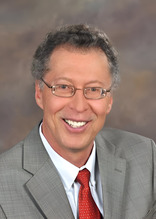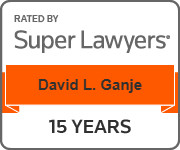Let’s not pretend. We have messed up parts of mother earth. Now let’s use the tools at hand to undo the mess and be good stewards again. Brownfield recycling, that is the brownfields program is one means to that end. If you are looking to start a new redevelopment project don’t get married, get engaged. Do your due diligence and explore the possibilities from exposing a brownfield.
The EPA defines a brownfield as “real property, the expansion, redevelopment, or reuse of which may be complicated by the presence or potential presence of a hazardous substance, pollutant, or contaminant”. The Comprehensive Environmental Response, Compensation, and Liability Act (CERCLA) mandated that the purchasers of property are liable for any contamination on this property regardless of when they acquired a site. However, CERCLA also created a defense known as the “innocent landowner defense” that can only be used if “appropriate due diligence” was conducted prior to the acquisition of the property. Appropriate due diligence has been exercised if an environmental site assessment (ESA), a thorough investigation of a sites current and previous owners, has been prepared.
ESA’s have an average cost of about $4,000 for a small business acquisition and can vary depending on variety of factors specific to the job. The typical businesses that leave behind brownfields include gas stations, dry cleaners, railroads, oil refineries, liquid / chemical storage facilities, and steel / heavy manufacturing plants. Typical hazardous materials they leave behind include hydrocarbons, solvents, pesticides, heavy metals such as lead, and asbestos. Much of the information about previous and past owners is public.
What is so dangerous about leaving these brownfields alone? Many of these brownfields are abandon commercial properties and tend to be an eyesore in the community. Not only can this lead to decreased property values in surrounding neighborhoods but the property can also pose serious health risks for new tenant and their neighbors. For example, the Love Canal disaster in Niagara Falls, in the late 70’s. Hooker Chemical Co. dumped over 20,000 tons of chemical waste in the unfinished and abandoned Love Canal. The canal was later paved over and sold to the city. The city then developed residential neighborhoods and schools on top of the contaminated land. About 25 years later, after an unusual amount of rain, a large amount water absorbed by the land upwelled the “entombed” chemical waste. Residents complained of chemical burns, organ failures, mental disabilities, and congenital birth defects. Eventually local families were relocated and the land was cleaned up. However, in recent years, residents on the rebuilt lands have complained of health issues similar to the ones originally reported 35 years earlier and have filed lawsuits against Hooker Chemical Co.’s parent company.
Once you suspect that the land you are planning to purchase could be a brownfield in need of cleanup what can you do? If you have not purchased the land yet you could include provisions in the purchase agreement that can indemnify you from liability for claims associated with existing contamination.
If you have done your due diligence and you know what you are getting into then you should already know that the Environmental Protection Agency (EPA) has set up the Brownfield Cleanup Program (BCP) “to encourage private-sector cleanups of brownfields and to promote their redevelopment as a means to revitalize economically blighted communities.” The BCP provides incentives through, grants, loans, training, and tax benefits to aid with the cleanup. Since the cost of cleanup is considerable the BCP may provide several hundred thousand dollars towards the cost of cleanup. This money comes with strings attached of course. Among other things, the costs are shared with the property owner, up to 20%, and the brownfield site must be cleaned up within a three-year period. In addition to tax incentives and financial assistance provided through the various governmental programs the land developer should be comforted by the fact that his contributions have also helped the environment. Furthermore, awards are given out by the NYC Brownfield Partnership providing public recognition for the most successful brownfield redevelopment projects.
Additionally, taking on a new brownfield project in NYC grants access to special municipal assistance programs through the NYC Office of Environmental Remediation (OER). The OER was established in 2009 to “design, build, and operate a set of world class municipal programs to advance cleanup and redevelopment of brownfield sites.” Since then they have developed over thirty new programs that take some of the most blighted properties in some of the most disadvantaged neighborhoods, cleans them up, makes them safer, and enables new development that brings new jobs and affordable housing.
The OER also distributes a variety of letters to aid sellers, lenders, and prospective buyers of brownfield properties. An “environmental review and assessment letter” is issued after the OER conducts an ESA on the property in question. It is used to provide assurances against liability. A “standstill letter” contains a preapproved remedy plan developed by a seller and the OER. The letter can be used to enroll the property in a brownfield cleanup program so that a prospective purchaser might receive financial assistance. This letter is intended to provide comfort to a prospective purchaser and its lender since the purchaser will be able to better estimate the cleanup costs.
If you have already started a construction on a new project and just learned of contamination, you may still be able to request a “look back letter” from the OER which would grant liability protection. Although a developer can gain liability protection after a project has started, they will not be eligible for brownfield funding incentives.
Many prime redevelopment sites are located on brownfields, don’t get married. Get engaged first and do your due diligence.
David Ganje practices law in the area of natural resources, environmental and commercial law.





